Case Studies > General Simulation
Building Design Retrofit to Achieve Net Zero Carbon
| About | This case study describes the IBPSA Student Modelling Competition 2023 winning entry on Optimising the performance of a university building by exploring retrofit solutions to achieve net zero operational carbon emissions. |  |
| By | Debanjana Das, CEPT University, Ahmedabad, India | |
| Location | Shanghai, China | |
| Category | Net-zero design, Existing Building, Retrofit | |
| Highlights |
|
Introduction
The eight-story building consists of offices, lobbies, restrooms, and service areas. The tower's central atrium is split into two sections, one from the third to the fifth level and the other from the sixth to the eighth. The sixth floor has skylights to provide lighting for the lower levels. The building's façade features vertical fins that guide the breeze inward and function as a shade element for the structure. Figure 1 shows the typical plan and elevation from the DesignBuilder model.
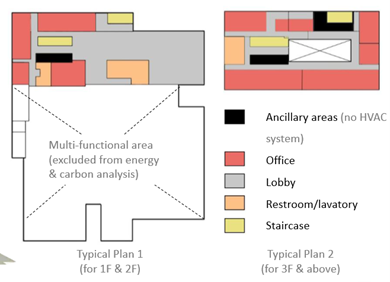
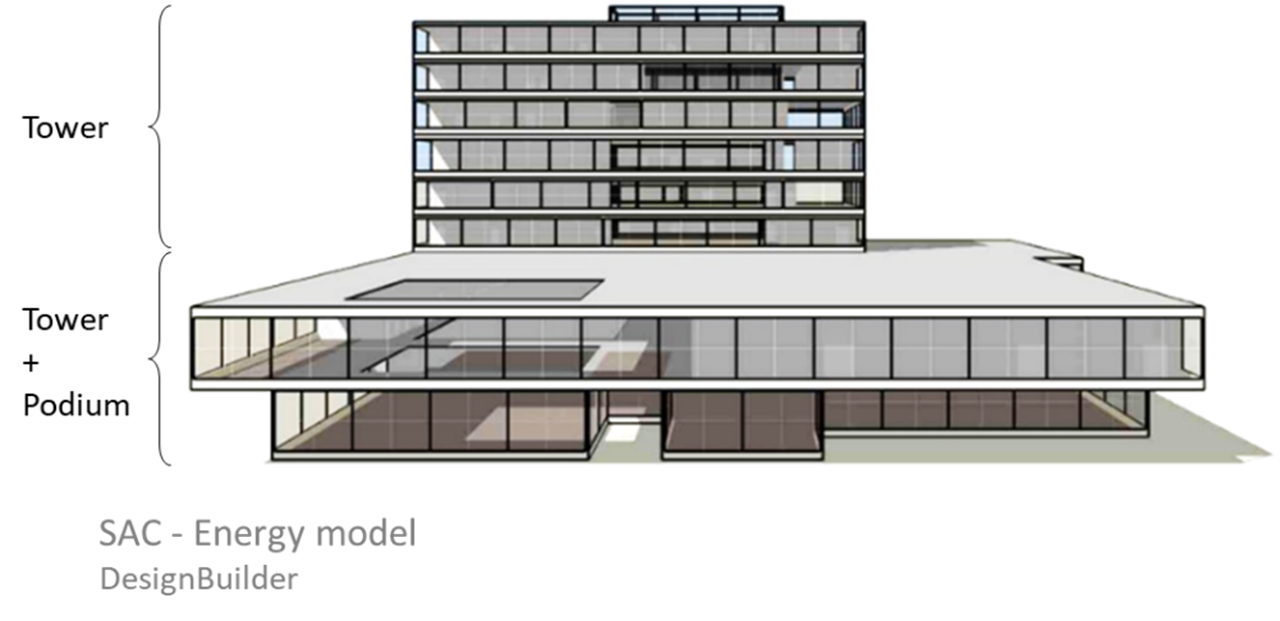
Figure 1: Building plan highlighting the zones
This case study starts with an overview of the step-by-step building design optimisation methodology, followed by an exploration of contextual possibilities and targets. The subsequent section details the design improvements in specific areas of HVAC systems, visual comfort, and lighting, and achieving net zero emissions by integrating Photovoltaics (PVs).
Design Optimisation Process
The general workflow followed to achieve this net zero carbon building is an iterative process where several aspects of building design were sequentially optimised until the target Energy Use Intensity (EUI) was achieved. These include passive parameters such as glass thermal properties and active systems such as HVAC, lighting, and PVs. Figure 2 explains the overall methodology.
The process involved modelling the building in DesignBuilder using scaled architectural blueprints as a guide. The building was accurately represented in the model's geometry, with a few simplifications (parapets and vertical fins) to help improve model performance. Subsequently, thermal zones were categorised according to internal gains, ventilation needs, and occupancy. Since fire staircases need ventilation, they were classified as distinct thermal zones. As a result, five thermal zones were established, including a staircase, office, lobby, restroom/lavatory, and multi-functional/conference room. Climate analysis was done to identify the key strategies that will help to achieve comfort, according to the climate type in Shanghai. The details are discussed in a later section. An analysis of the photovoltaic options was carried out using ArcGIS to identify solar power potential. HVAC optimisation was done based on the market study of Shanghai and the climate study. Lighting optimisation and visual comfort were also considered.
Where possible, the input parameters for simulations were taken from the design brief, and any missing data gaps were filled by referring to ASHARE 90.1.
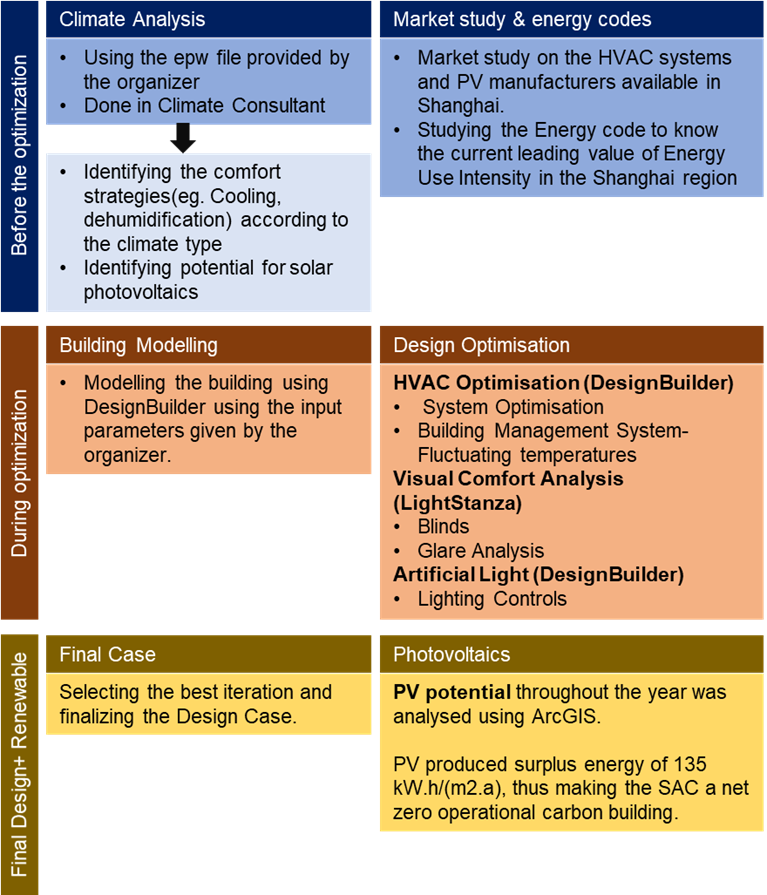
Figure 2: Overall workflow for the design optimisation process
The base case was a standard building, representing conventional design and operation practices. The base HVAC system is a Packaged VAV with reheat, with details taken from ASHRAE 90.1, Table G3.1.1-3 and G3.1.1-4. There is no renewable system in the building. No lighting control and blinds were considered in the Base Case.
However, recognising the pivotal role of HVAC systems, lighting, and renewable energy sources in energy consumption, the subsequent iterative cases focussed on these parameters. Each case strategically altered one parameter to gauge its impact on energy consumption. This systematic approach allowed for a comprehensive understanding of how adjustments in these key factors can contribute to overall energy efficiency.
The analysis of HVAC system included sensitivity testing to ascertain the effect of every iteration on EUI. A dedicated outdoor air system (DOAS) was used to meet the fresh air requirements. After appropriately sizing the HVAC system, a dehumidification system was added for occupant comfort. Additionally, controls were finetuned to achieve the best operational performance. Dehumidification and DOAS were found to have the greatest effects on the EUI. During subsequent optimisation of the rest of the design, Internal blinds were added to minimise glare and motion-sensor lights were added to optimise the lighting energy use. The following cases were developed after analysis of simulated results: Base Case: BAU building with pre-defined occupancy, lighting schedules, and VAV system
Case-1 | HVAC Optimisation: Building with an optimised VRF system
Case-2 | DOAS: Introduction of dedicated outdoor air system to meet fresh air requirements
Case-3 | Lighting Optimisation: Building with daylighting and artificial lighting controls
Case-4 | PV Potential: Integrating Photovoltaics to meet the electricity demands
Final Design: Combined case containing optimised parameters of all previous iterations
The figure below shows the overall matrix covering the various design aspects that were optimised in each of the model iterations. The check marks indicate the category within which the change was made in each of the cases. For example, in Case 1, changes were made to the HVAC system, whereas in Case 3 lighting was changed. In the final design case, all three modelling aspects were changed.
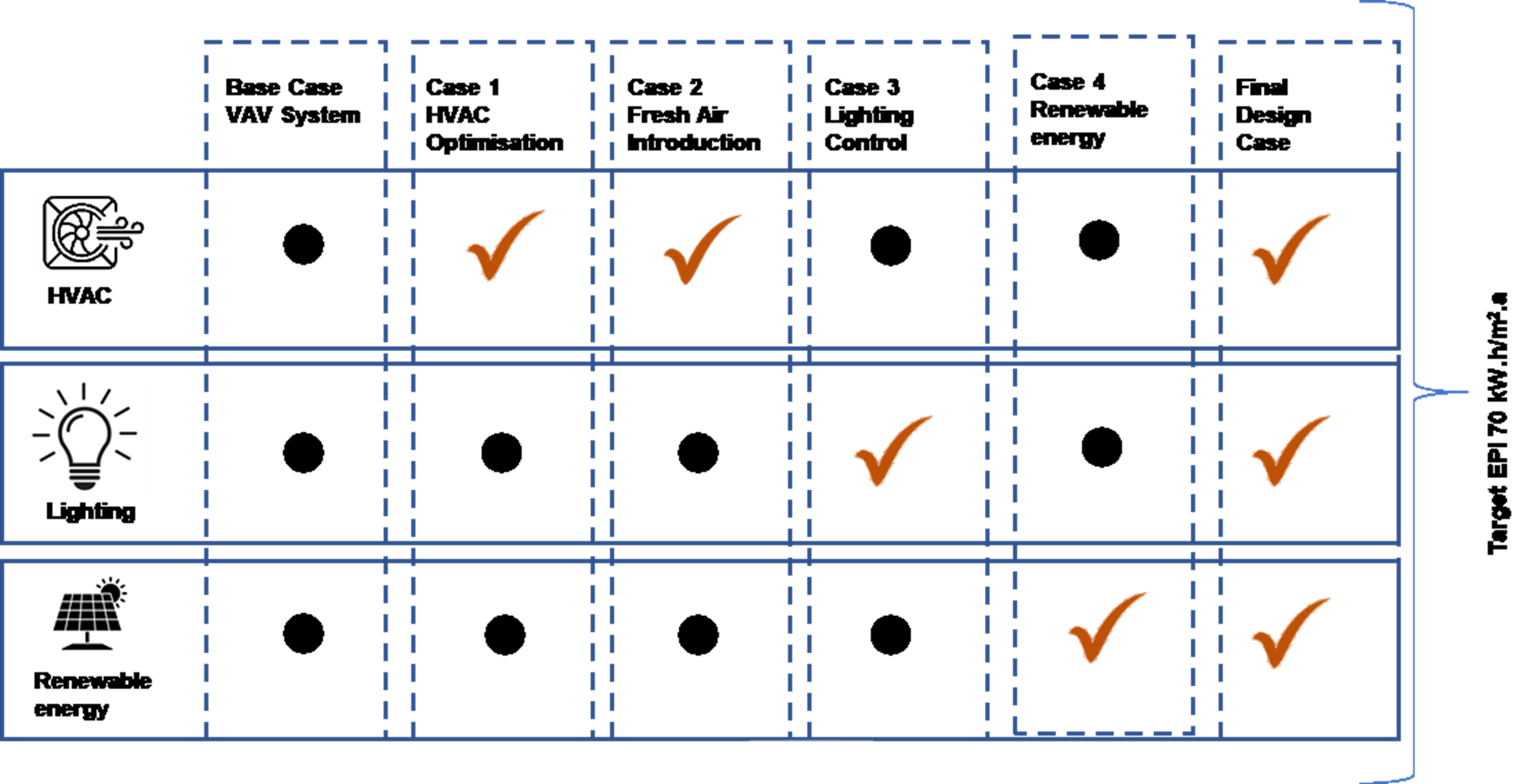
Figure 3: Case Matrix showing the design aspects modified in each of the iterative cases.
Contextual Analysis
This section explains the context, scope of various strategies, and performance targets that the project is trying to achieve to meet the net zero objectives.
Local Climate and Thermal Comfort Analysis
Shanghai is classified as a Humid Subtropical climate (Cfa) zone using the Koppen-Gieger classification. Strategies such as mechanical ventilation, window shading, high-performance glazing, and dehumidification were identified to ensure occupant comfort. Thermal comfort analysis was done by assessing the onsite measured weather data. External temperature ranged from -5°C to 37°C with constantly high humidity levels. The target comfort parameters for building spaces were 18°C -26°C for temperature and 60% for relative humidity per the occupant requirements. Figure 4 shows heat maps of various external climate factors and passive strategies that can be applied and Figure 5 shows the building’s conditioning requirements to meet comfort targets. The conditioning required for the building includes dehumidification throughout the year, heating for 51% of hours, cooling for 17% of hours, and dehumidification without heating/cooling is required for 32% of hours.
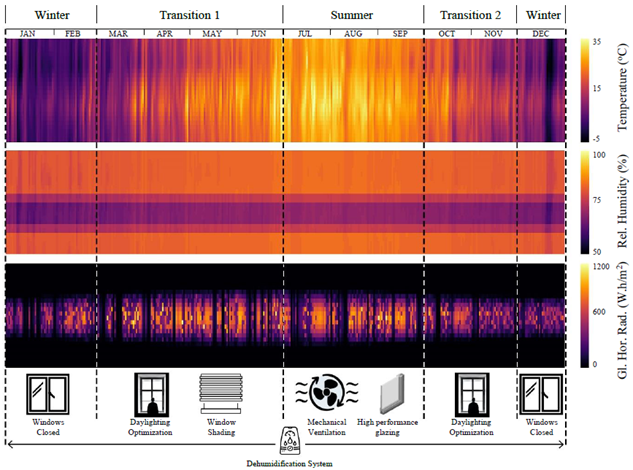
Figure 4: Potential Passive Design Strategies Through Climate Analysis of Shanghai
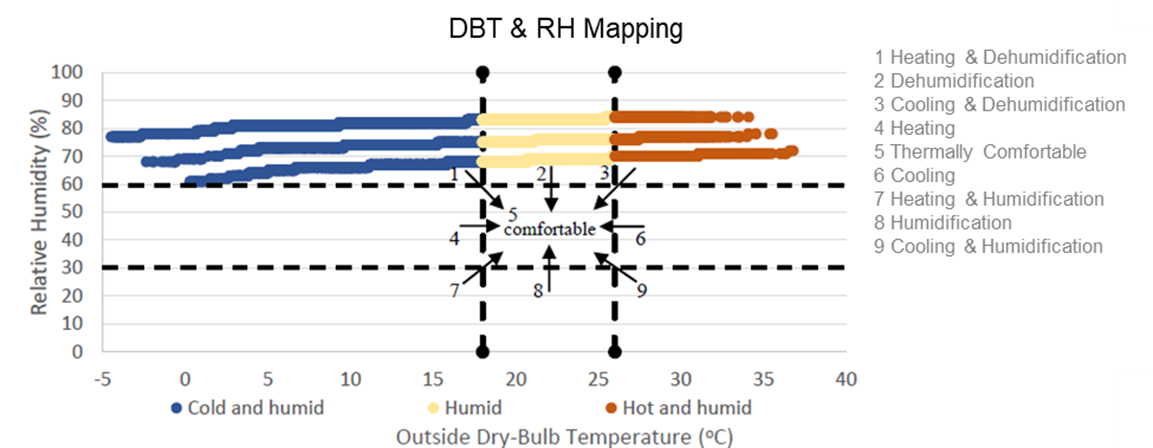
Figure 5: Dry Bulb Temperature X Relative Humidity Analysis
Energy Performance Target
The energy model optimisation covers carbon emissions in the operation phase from cooling, heating, lighting, and plug loads. Various design iterations were tested with the objective of attaining the target EUI of 70 kWh/m2/year required by the local energy codes.
HVAC System Optimisation
Offices and lobbies were the major contributors to the HVAC loads. As the details of the existing HVAC system were unknown, it was assumed to be Rooftop packaged VAV with reheat, Fan Control: VAV, Cooling Type: Air cooled chiller, Heating type: Boiler (per ASHRAE 90.1 system for climate Zone 3A). Dehumidification was done through heating and cooling methods and reheating was done at terminal units. Figure 6 shows the base case system used. For the optimal HVAC system, various options were studied. Water-cooled systems proved less effective due to high humidity levels outside. A VRF system could be retrofitted easily (with minimal impacts on the architectural character of the building) and was found to be more energy efficient than the VAV System.
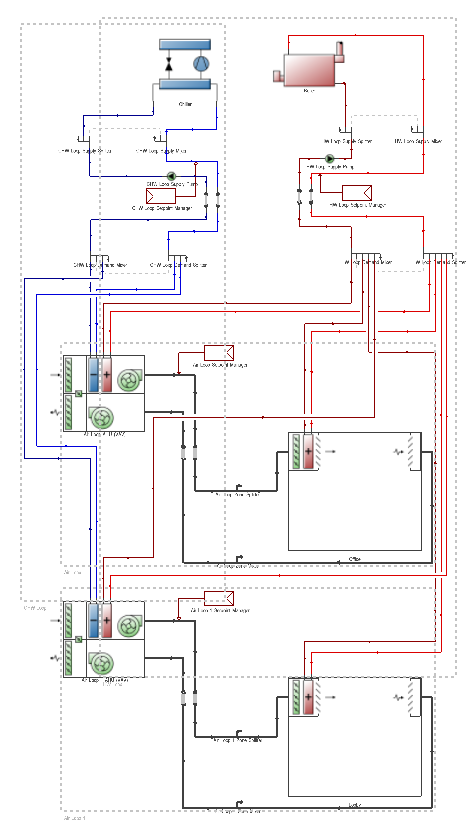
Figure 6: HVAC Base Case
Major brands manufacturing VRF air-cooled units of desired tonnage available in the local market were assessed for their efficiency. ‘Hitachi’ modules were shortlisted. The components of the system included: the VRF Outdoor and Indoor Unit, DOAS, and CAV unit. These modules are available with added features such as Dry Mode, Monitor sensor, louver direction etc. After selecting a possible system replacement, realistic iterations suitable for the building were assessed by a model sensitivity analysis, including transitioning to a VRF system and installing DOAS and BMS control systems.
Lighting System Optimisation
Annual Sunlight Exposure (ASE) and Spatial Daylight Autonomy (sDA) metrics were optimised using LightStanza. sDA 3oo/5o% to understand the overall light distribution inside the space and to identify modifications needed to window opening areas for maximum daylight availability. Blinds were also added to meet ASE1000,250h thresholds. A PVC-free solar screen fabric was utilised as a semi-transparent blind for solar protection and glare control. Using this screen, the "Glare not Perceived" area increased from 77% to 100% with a notable 11% decrease in illuminance.
Further, to reduce electricity consumption from artificial lights, multiple strategies were deployed such as a multi-lighting control strategy where light could be either on, off or dimmed as per need and time of day.
Carbon Emission Reduction by Photovoltaics
An annual shadow analysis was used to check the area suitable for PV panel placement. 627 m2 of the roof remained shaded for 103 hours and a significant portion was covered with skylight. The net area considered for PV array was 1842 m2.
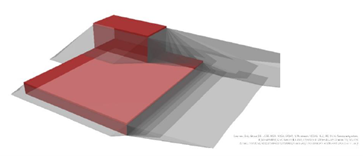
Figure 7: Annual shadow analysis of the SAC building for appropriate PV panel placement
Using JA Solar's JAM54S41 435/GR/1500V model, a detailed DesignBuilder PV analysis was undertaken taking into account factors such as panel orientation and losses due to cloud cover and soiling. The estimated annual energy generation potential was calculated to be 1515 MWh with excess being exported to the grid.
Building's Final Performance
Energy Use
The main goal of the project was to produce a nearly net zero carbon emission building through active and passive carbon reduction strategies. Figure 8 illustrates the reduction in Energy Use Intensity (EUI) achieved through various design interventions compared to a base case model.
The base case represents a building design meeting the current standard for occupant comfort. Successive improvements included replacing the Variable Air Volume (VAV) system with a Variable Refrigerant Flow (VRF) system, resulting in a 34% reduction in EUI. Incorporating a Dedicated Outdoor Air System (DOAS) for ventilation further reduced EUI by 41%. Lighting control strategies decreased EUI by 43%, while integrating photovoltaic (PV) systems led to a 59% reduction. Finally, by combining the above design improvements, the team predicted a 66% decrease in EUI relative to the Base Case.
With 24 kWh/m2/year of building's electricity use being met from on-site PV being, the EUI target of 70 kWh/m2/year is achieved.
In summary, a significant reduction in the EUI was achieved through the combination of strategies focusing on HVAC, ventilation, dehumidification, and lighting, all while ensuring continued thermal comfort and occupant satisfaction.
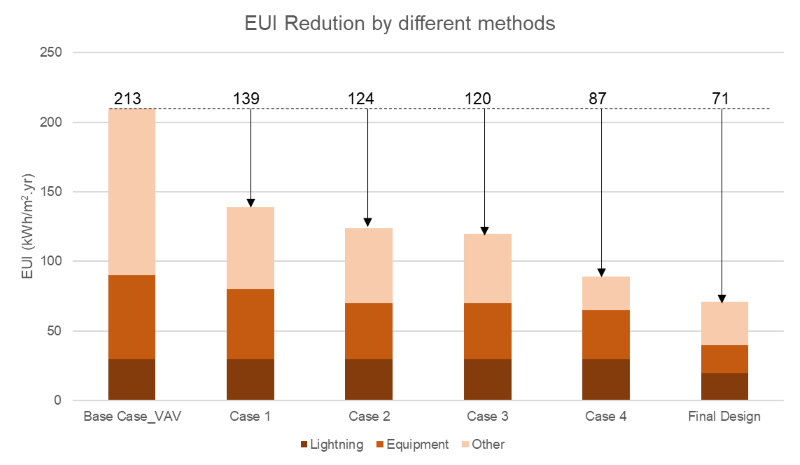
Figure 8; Summary graph of EUI Optimisation for the SAC
Carbon Emissions
Achieving net zero operational carbon emissions for the building was a meticulous process involving design optimisation and strategic utilisation of onsite electricity generation. After design optimisation, the net energy use was calculated as 70 kWh/m2/year. The building incorporated photovoltaic (PV) panels for electricity generation, with surplus energy exported to the grid. Seasonal variations in electricity exported ranged from 42 kWh/m² in summer to 23 kWh/m² in winter, with transition months averaging 70 kWh/m².
Seasonal fluctuations in exported electricity were observed, ranging from 42 kWh/m² in summer to 23 kWh/m² in winter, with transition months averaging 70 kWh/m².
During the summer period (July to September), the CO2 emissions resulted in a reduction of (-13,433 kg). Likewise, in the winter months (January, February, and December), emissions were reduced to (-2,804 kg). Transition months (March to June, October to November) also exhibited a significant reduction, with emissions offset by (-22,959 kg). This comprehensive analysis underscores the pivotal role of PV panels in reducing carbon emissions and curbing energy consumption.
Furthermore, the consistent attainment of negative carbon emissions throughout the year in the Design Case signifies a near 100% reduction for the project.
 |
About the author Contact: debanjanadas06@gmail.com |
